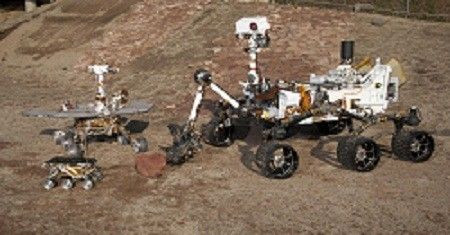NASA To Send Humans To Explore On The Uncharted Surface Of Venus

Looking back, Mars was the number one target of NASA and other space agencies when it comes to solar system exploration. But some thinks that Venus being Earth's closest neighbor would also make a better candidate. As mentioned, Venus is the nearest planet located at a distance ranging between 38 million kilometers and 261 million kilometers, while Mars is situated somewhere between 56 million to 401 million kilometers.
In terms of size, Venus is somewhat similar to Earth measuring a radius of 6,052 km in comparison to Earth's 6,371 km radius. The planet is also comparable to Earth's density and chemical composition.
Some would think that such an idea is feasible, but unfortunately, Venus is theoretically uninhabitable. Based on CNET's report, the probes that were sent to gather information from the planet lasted only 2 hours given the harsh conditions that exist in Venus. A big percentage of the planet's atmospheric layer consists of carbon dioxide and small quantities of nitrogen. It generates pressure which is 92 times greater than that of Earth's combined with an average temperature of 462 degrees Celsius or 863 degrees Fahrenheit. Studies also show intense volcanic activity and a cloud layer consisting of sulphuric acid which would make Venus more likely an arch enemy rather than a possible prospect for colonisation.
NASA might have discovered a possible solution given the inhospitable conditions of Venus. The HAVOC project, which stands for High Altitude Venus Operational Concept was created by the Systems Analysis and Concepts Directorate team at NASA Langley Research Center with the purpose of building a so-called "Cloud City" on Venus. The "lighter-than-air" spacecraft might remain above the sulphuric acid cloud layer for a period of 30 days. This will give astronauts enough time to gather more data regarding the planet's atmosphere.
Helium airships will be sent 31 miles above Venus where in scientists confirm that conditions are safer and more of like Earth. Daily Mail also added that NASA thinks that landing in Venus' atmosphere would be much easier compared to penetrating that of Mars'. In perspective, two astronauts might carry the 30-day mission on the surface of the target planet. Approximately, it would take 110 days of travel flying to the closest neighbor to Earth.
According to Chris Jones from the Langley Research Center, the planned Venus exploration will serve as a practice run in order to achieve a human-scale mission to Mars. If a successful manned mission to Venus would be achieved with the technological advancements available then the idea of flying humans to the red planet might be next.
Email Address: edgereyesjr@gmail.com





















